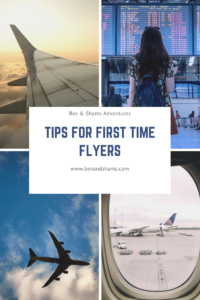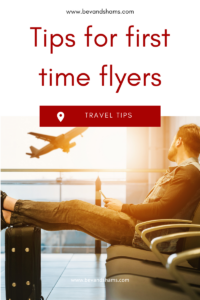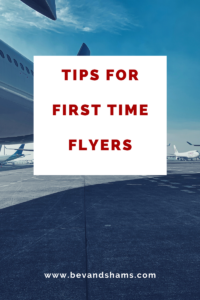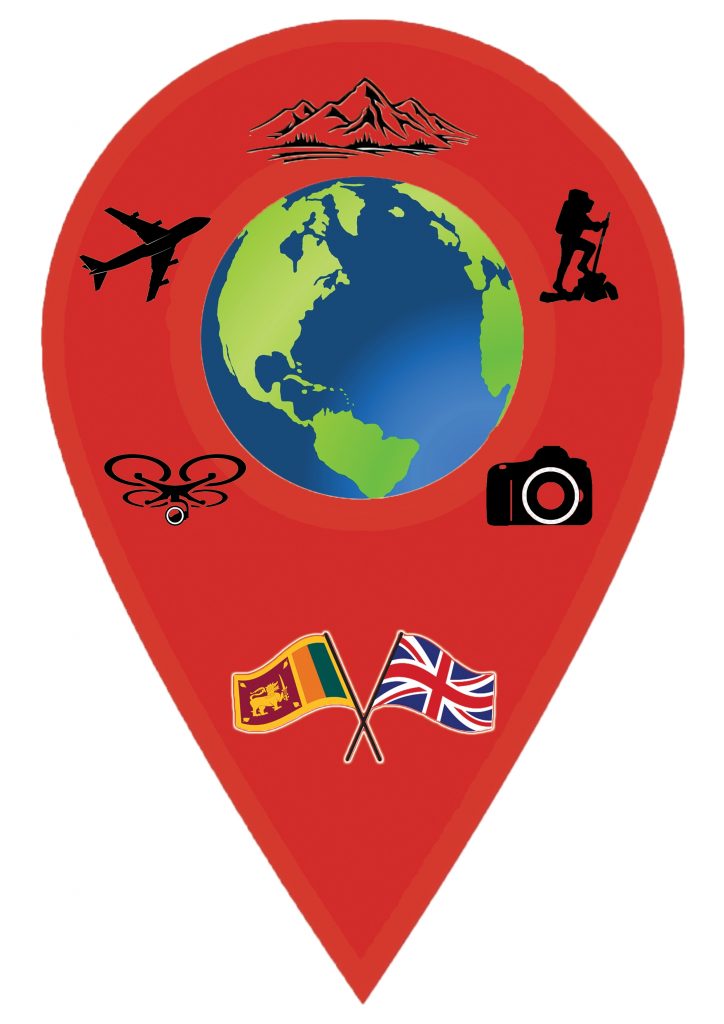12 Essential tips for first time flyers
If you’re a first-time flyer, you may have mixed emotions. Your excited for your first adventure, but a little nervous about navigating the airport and boarding the plane. I certainly had these emotions, when I travelled solo to Australia on a gap year.
It was the first time I had been on a plane and I was going a long distance with a layover in Singapore. But looking back, it wasn’t as nerve-wracking as I first thought. I made it to Australia flying through the clouds and back and have taken many flights since.
All that is required, is a little research and planning, to ensure a successful and stress-free flight. And before you know it, you’ll be travelling like a pro.
Put those mixed emotions to the side and get prepared with these essential tips for first time flyers.
Table of Contents
Before the flight
Whether you’re a first-time flyer or a frequent flyer, here are just some pre-flight checks to carry out. Being prepared, will ease any stress you have before your flight.
Research and plan ahead
Before your trip, do some research and plan ahead.
Check the airlines website for any specific rules or regulations, such as baggage allowances and carry on restrictions.
Visit the airports website to check what facilities are available and the layout of the airport. Including the departing, transiting and arriving airport.
Check if the airport has your favourite restaurant, for a comforting meal, or your favourite shop in duty free. Book yourself into the airport lounge for a little comfort. Make your experience at the airport an enjoyable one.
If you have any layovers, check which terminal you’ll be arriving in and departing from. And plan how to get between each terminal.
In most cases, the connecting flight will depart the same terminal that you arrived. But not in all cases.
We often transit in Doha, when travelling to Sri Lanka. But our connection is in a different terminal. The terminal tram, connects us between the two.
Familiarise yourself with how to get to your connecting flight.
Also check when booking flights that any connecting flight is leaving from the same airport.
Stay up to date with the latest weather and airport news, to anticipate any delays or disruption.
Our first trip to New York got cancelled due to Volcanic ash from Iceland that affected all flights arriving and departing the UK and some of Europe.
You may also want to familiarise yourself with the check in process. A rule of thumb for a short domestic flight or short flight, is 2 hours prior to your flight’s departure. For an international flight, it is recommended to arrive at the airport 3 hours prior to departure.
Although this is not set in stone, we always prefer to arrive early, so we are prepared and don’t have to worry about not arriving on time due to traffic.
Researching and having a plan in place, will help you stay on track if something was to go wrong.
Tip: When booking flights, we would recommend a layover of 2+ hours. Should there be any delays, you shouldn’t miss your connecting flight.
Booking the flight
The first thing we check for when booking our flights, is the airport we depart from and the arrival airport.
Choosing the right airport to depart from is crucial. The price of flights can depend on the airport you depart from.
For example, if we fly out from London Gatwick, flights are cheaper than flying from London Heathrow. But not all airports cover international or even local destinations.
Some airports may only cover domestic flights, while other airports include domestic and international flights.
The same also applies for the airline. Not all airlines cover every destination.
Most budget airlines fly from London Stansted, but not all airlines cover European destinations.
When booking your flights, shop around to find the best deal that is convenient to you.
If you’re budget travellers like us, then you may prefer to book that flight from the cheapest airport.
We have travelled with Ryanair for European destinations, British Airways for both European and international flights, Sri Lankan Airlines, Emirates and Qatar Airways for flights to Sri Lanka and Spirit Airlines for domestic flights in USA.
When it comes to airlines, these can be a bit tricky. Each airline has their own policy, which is different to other airlines.
Watch out for the budget airlines, as they will offer you a cheap price for airfares, but you’ll have to pay for extra if you want to select your seats and even bring a cabin bag with you.
When you come to booking the flights, especially with the budget airlines, just check if you are entitled to bring luggage with you, or pay the additional premium if you need any cabin bags.
Now that you have booked your flights, you’ll need to plan how to get to and from the airport. Check public transport availability and the reliability of the public transport. Are taxi’s affordable if you’re on a budget.
Dive deep into the logistics of how to get to the airport and to your accommodation at your arrival destination, you will thank yourself for it.
Prepare documents
Always check your documents before travelling. Make sure there in date.
I made this mistake recently, when I knew my passport was due to expire, but I didn’t know when. Shams and I discussed about going to Sri Lanka, when it dawned on me that my passport might expire within the period of travel.
I dug out my passport and low and behold it was due to expire within 6 months of my intended travel.
While this isn’t a problem as I left enough time to apply for a new passport, but had I have not checked it prior to booking the flights, I wouldn’t be travelling to Sri Lanka.
Now my passport has 10 years remaining.
Most airlines will not accept passports that will expire within 6 months of travel.
So, even if you are just thinking of travelling, double check your passport expiry date. If it is due to expire, then apply for a new passport before you book your flights.
Depending on where you travel and your nationality, you may require a visa. Check if you need a visa and apply for the visa in time for your departure.
In most instances, it shouldn’t take long to receive an outcome. But you may have to wait up to 1+ months or more to hear if your visa has been granted or not.
Do some research to establish if you require any additional documents to travel. For example, if you are hiring a vehicle, make sure you have your driving license and an international driver permit, if required.
By preparing yourself prior to departure, you’ll have everything in order ready for the departure date. And you’ll be less stressed.
Packing smart and light
While flying for the first time is a daunting experience, one of the most stressful parts of travelling is knowing what to pack for your holiday.
You don’t want to leave anything behind, neither do you want to overpack and either pay the hefty excess baggage fee, or hold up the queue while you try and sort your bags out at check in.
Keeping it simple.
Check the baggage restrictions for the airline. Budget airlines often charge an additional fee for cabin bags or checked in bags. If you’re on a budget, pack light and make sure your bag is within the required size.
If you must include a cabin bag, then purchase at the time of booking, it will be far cheaper than paying the cabin bag at check in.
For the longer flights, airlines are often a little more relaxed and you can often take a checked in bag that weighs between 20kg-35kg. Again, always check the airline as they’re baggage policies will vary.
Consider packing a change of clothes, essential toiletries and any medication you may need in your carry-on bag.
If your checked in bags are lost or delayed, you’ll have some essentials with you.
For a more comprehensive guide to what to pack for your trip, check out these two posts:
What to pack in your hand luggage
What to pack for a weekend away.
Check in online or at the Kiosk
To speed up your experience at the airport, we would recommend checking in online.
You can manage your booking online and the online check in will be available normally 24-48 hours before your departure date.
When you check in online, you’ll be required to enter your passport details and other personal information. You will then have your boarding pass ready to print or store on your phone.
Once you arrive at the airport, you can then just drop your bags off that needs to be checked in, otherwise, it is a smooth and quick process when entering the airport.
Checking in online, is quicker and will make your experience of flying for the first time a stress-free experience.
If you’re unable to check in online, don’t worry, you can still check in at the airport. When you arrive, just check the boards for your check in location and head to check in desk where a member of the airline staff can check you in.
At check in, they will check your details and provide you with a boarding pass.
The staff are friendly and helpful and will be happy to assist you, should you have any problems.
At the airport
Once you’re at the airport, this is where all your planning and research comes into it, for a smooth and easy flight.
Arrive early at the airport
Arriving at the airport early is one of the most important tips for first time flyers.
We mentioned earlier that it’s a good idea to arrive between 2-3 hours prior to your flight, especially during peak season and for international flights.
If you arrive early, it gives you sufficient time to check in and drop off any checked in bags, if needed and pass through security and find your gate, without having to rush or get flustered.
Especially during peak season, queues to go through security can be extremely long and may take a while. By giving yourself extra time in the event of delays or queues, you know you’ll have time to make the flight without the added stress.
Most airports will have signs in the local language followed by English. This will help to navigate an unfamiliar airport. But it may also be a good idea to learn some of the local language to help you get by easier.
On arrival at the airport, check the departures board for your flight number to establish if check in is open, before making your way to the zone.
Once you have checked in and dopped your bags off, head for security.
After passing through security, the departure lounge awaits.
Enjoy the goods on offer at duty free, or sit down for a bite to eat before heading to the gate.
Departure boards will be dotted around the lounge, regularly check the boards for your departure gate number or letter.
Once the gate is open, follow the signs to your departure gate, ready to board your flight.
Security checks
First time flyers may feel that going through security is a daunting experience, but it is a necessary process. Familiarise yourself with the security procedure in advance, you’ll be more organised and you’ll know what to expect when you get there.
As you enter security, you’ll be required to remove all electronic devices from your hand luggage. Place all personal belongings within the plastic trays.
Electronic devices include laptops, Ipads, Kindles, phones, etc.
If you do forget to remove an electronic device, don’t worry, a security member will just ask to go through your bags and will possibly do drug swabs.
It’s nothing to worry about. I have done it before, were I left something in my bag by mistake and the bag was manually checked to make sure it was safe to continue. It is a little embarrassing, but these things do happen.
If you have any liquids within your hand luggage, you’ll need to make sure they are within 100ml and can fit within a small clear bag. These clear bags are located just as you enter security.
Liquids include, drinks, makeup, perfume, medication, etc.
You can take drink bottles through security, providing they are empty. We will take some spare drinking bottles and re-fill them once we’re in the departure lounge. Most airports include drinking fountains to fill drink bottles with.
You may also be asked to remove your outer clothing, such as jacket, jumper, belts and shoes.
If you are asked to remove these, place these within the plastic trays and push it onto the belt, which will take it through the x-ray machines.
Once you are ready, you’ll be called to walk through a metal detector.
You or your belongings maybe called for random spot checks, in which a member of security may ask to go through your hand luggage and do a quick body search.
Again, this is nothing to worry about, I have experienced this a few times.
All the security officer will do, is go through your belongings swab your bags for drugs, do a body search and once they are satisfied, you’ll be on your way.
For a hassle free and smooth process through security, always stay patient, follow instructions from the security personnel and co-operate fully.
Boarding procedures
Listen out for boarding announcements and check the departure boards regularly for your gate number or letter.
At the gate, when the airline stewards are ready for boarding, priority is given to families with children, elderly and disabled passengers first, before allowing other passengers to board.
An announcement will be made for the remaining passengers to board. In our experience it is often in groups, or zone numbers, to allow smaller numbers of passengers to board a small plane. Familiarise yourself with the zone or group number and listen out for your turn to board.
If you checked in online, you may have selected your seat. Make your way to your seat and store your hand luggage in the overhead lockers or under the seat in front of you.
Dress comfortably
Whether you’re on a long or short flight, it can be tiresome, so it’s essential to dress comfortably.
We would recommend loose-fitted clothing that’s breathable and allows you to move freely.
Temperature can change on a plane, we often feel cold when we fly, so we will wear layers to keep us warm on the cold flight. Since it is your first time flying, you should include layers in the event you do get cold.
Choosing comfortable shoes that are easy to slip on and off. Wearing comfortable clothes and shoes is key to a cosy and pleasant journey.
Staying hydrated and fuelled
Flying can make you dehydrated, so drink plenty of water before, during and after your flight to keep your body hydrated and stop you from becoming unwell.
Fuelling your body with the right food. It isn’t comfortable if you eat heavy greasy food that may cause bloating and indigestion during the flight.
Eat something that is nutritious and light prior to your flight.
During the flight
You have overcome the most stressful part of travelling, relax back and end enjoy the flight, with these tips on how to stay comfortable.
Airplane etiquette
During the flight, there’s a variety of different noises. The aircraft noise as it travels in the air, passengers talking, babies crying, cabin staff moving around the aircraft, etc.
For first time flyers, this may sound strange and can get overwhelming. There’re a few ways you could stay comfortable and get some sleep.
Earplugs are a great way to reduce the sound of the aircraft and the noise around you. Maybe you might prefer to listen to music, while you try to get some shuteye.
Just be mindful of other passengers onboard, as they don’t want to be disrupted by you and your loud music.
An eye mask is another great option to black out any bright lights from the flight.
Onboard flight entertainment is a great way to pass the time, while watching your favourite movie, or watching one of the latest movies that have been released. Many airlines provide some of the best TV series or comedies.
However, not all airlines offer in-flight entertainment.
We have travelled with several airlines and not all our flights have included entertainment. The shorter flights within Europe or flights that are less than 5 hours, haven’t included entertainment.
Prior to your flight, check what entertainment if any will be available. Pack a book or kindle to read on the plane, read a magazine or bring a puzzle book. These will provide entertainment, if there isn’t any onboard your flight.
Should you or should you not recline your chair to get more comfortable?
It is a big debate and many travellers hate the chair in front reclined.
It can be an inconvenience and it reduces your space, especially if someone is tall and their legs get squashed because of a reclined chair.
As a first-time flyer, you may wish to ask permission with the person behind you if they don’t mind you reclining the chair.
In our experience, we have never been asked if we mind, it has always been a custom that the chair in front has been reclined.
Just be mindful that if you do recline your chair, you may only want to go back a short distance to be comfortable, although these seats do not fully recline into a bed.
Relax and enjoy your first flight! Take a deep breath, trust in the expertise of the airline crew, and embrace this exciting adventure. Flying is an incredible experience that opens a world of possibilities. So, sit back, relax, and enjoy the journey!
Destination
Your first flight is over and you have arrived at your destination.
The aircraft will taxi to the gate, at which point you can now collect your hand luggage and exit the plane.
As this is your first flight, you may wish to wait for all the passengers to exit the plane before you disembark. Especially when everyone else is jumping up to get off the plane.
Once you have collected your personal belongings, follow the signed for immigration.
Depending on how busy the airport is, you may find you’re in a long queue with other passengers. Just be patient and when you are called to and immigration officer, provide them with your passport and visa, if required.
An immigration officer will check all your details, you may get asked additional questions to validate your travel. Just remain calm and answer the questions honestly and politely.
Once the immigration officer is satisfied to allow entry, they may stamp your passport and be allowed to proceed to baggage claim.
Follow the signs for baggage reclaim and check the board for your flight number and which conveyor belt, to pick up your luggage.
Once you have located your luggage, head straight to customs and proceed through the relevant channels.
If you have anything to declare, you must declare this, but if you don’t, then proceed through nothing to declare and you’ll enter the arrivals.
You have made it through your first flight without a hitch. You’ll just need to do this again on your return flight.
Tips for first time flyers
As a first-time flyer, preparing and knowing what to expect is key to a smooth and stress-free experience.
You’ll be better prepared when you plan and research your trip, you’ll have a better understanding of airline policies and facilities.
Arrive at the airport early to avoid being flustered, you’ll have plenty of time then to go through airport security and finding your gate.
Pack smart with all your essential documents in your hand luggage and dress appropriately to ensure you are comfortable through the flight.
You may feel a mix of excitement and nervousness as a first-time flyer. But once you have done your first flight, you’ll be wondering why you were so nervous in the first place.
I felt the same emotions when I set off to Australia for a gap year, but one thing I learnt from the trip is to be prepared and enjoy the ride.
Once you have taken your first flight, you’ll ready to book your next adventure.
Continue your travel planning, with these useful posts:
- Travel gift guide
- Which travel insurance to purchase
- Free virtual tours
- How to stay safe while travelling
- What to include in your DIY first aid kit
- What to pack in your beach bag
- What to pack in your hand luggage
- Best travel backpacks to buy in 2024
- Best travel podcasts to listen to in 2024
- What to pack in your hiking bag



